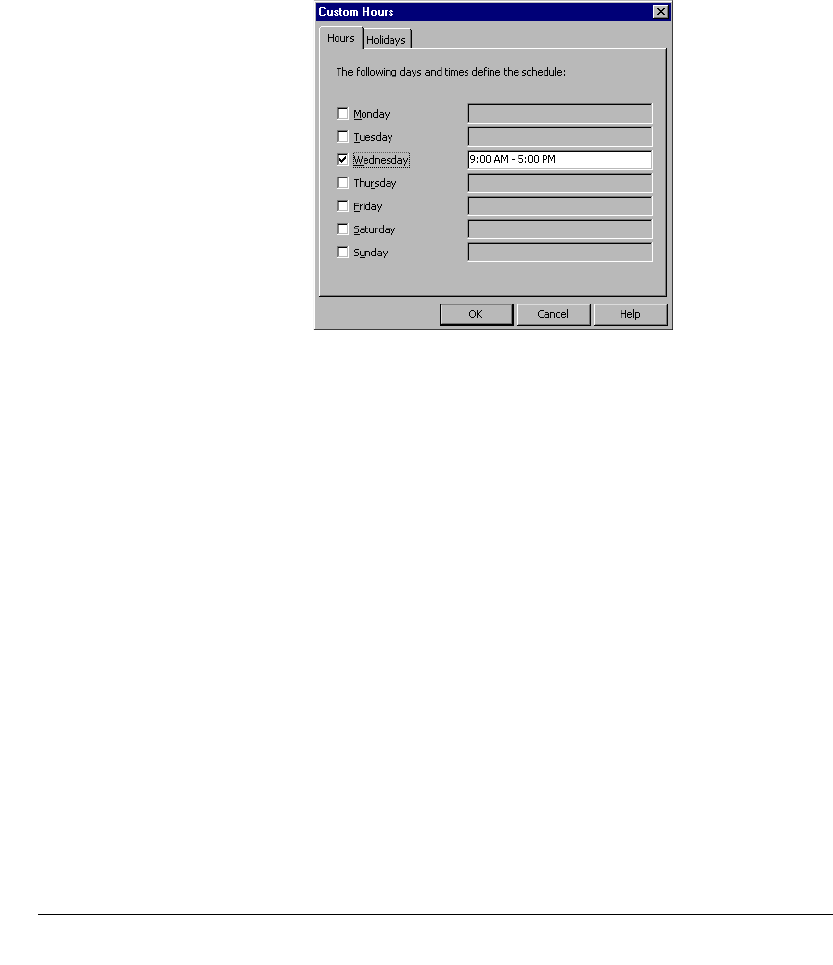
CHAPTER 12. WORKING WITH VOICE MESSAGES IN THE CLIENT 12-9
BETA DOCUMENT - PRELIMINARY & CONFIDENTIAL
n On holidays. Notifications are sent on holidays.
n During custom hours. Notifications are sent during the days and
hours you define, independent of your office’s business hours and
holiday hours. Click the
Custom Hours button to specify when to
receive notifications. The Custom Hours dialog box opens.
On the Hours tab, enter the days and times.
On the Dates tab of the Custom Hours dialog box, click Add to
specify individual calendar dates. When your custom hours are
finished, click
OK.
10. To receive notifications during the times you have chosen, make sure
Enable this schedule action is checked in the Schedule Notification
dialog box, and then click
OK. You return to the Schedule E-mail (or
Pager) Notification dialog box.
11. To add more schedule entries, repeat this procedure. When your
schedule is finished, click
OK.
Listening to your voice messages ________________________
To listen to a voice message, double-click the message. For further instructions
on using the audio controls, see “Using the audio controls” on page 7-22.
You can play the message either over your computer's speakers or over your
telephone. Choose
Tools > Audio Output to switch audio output from one to the
other, or use the button in the status bar.
If you have call announcing turned on, messages less than five (5) seconds in
length are prefaced by a recording of the caller's name.
Note: You can open some Client views while a message is playing and the
